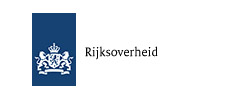European Environment and Health Committee
Report on the 19th meeting of the EEHC, Copenhagen - air pollution and effecst on children
18.07.2005 |

Report on the 19th meeting of the EEHC
Copenhagen, 2 - 3 June 2005
“CEHAPE Regional Priority Goal 3: Preventing and reducing respiratory disease due to outdoor and indoor air pollution”
Review of scientific evidence on preventing and reducing respiratory disease due to outdoor and indoor air pollution
Click here to download the full Report on the 19th meeting of the EEHC, Copenhagen (232 KB, WORD)
Effects of Air Pollution on Children’s Health and Development
Dr Robert Maynard, Department of Health of the United Kingdom, gave the introductory address. He referred to the WHO book due to appear in a few weeks time entitled “Effects of Air Pollution on Children’s Health and Development”, prepared by a working group of international experts examining the causal links between air pollution and effects on children’s health, in which he participated. Air pollution causes premature deaths, with perhaps the most famous episode being the smog in London of 5 to 9 December 1952, which killed between 4000 – 8000 people, including children. Although high levels of air pollution were known to affect children, identifying the impacts of lower levels of exposures required a systematic review of the evidence accumulated by epidemiological and experimental studies.
The working group defined four categories of evidence – sufficient to infer causality, suggestive of causality, insufficient to infer causality and showing no association. Under the first category, the findings were that particulate matter (PM) causes post-neonatal respiratory deaths, impaired lung development, cough and bronchitis. They also found a direct causal effect of pollutants on aggravation and prevalence of asthma, increased respiratory tract infections, central nervous system symptoms and increased sensitization to allergens. It was difficult to separate the exact individual pollutants as they often came from the same source and often one acted as a marker for another. Asthma understandably attracted much public interest. Asthma symptoms were made worse by air pollution. There was an asthma epidemic among children, despite the fact that air pollution generally was falling. In some schools in the United Kingdom, 30% of children suffered from asthma although this was reducing for unknown reasons.
Children were more susceptible to pollution than adults due to their high metabolic rate, greater activity, proximity to pollutants, developing detoxification processes, small airways, frequent respiratory infections, developing immune systems and overall susceptibility due to their changing, growing systems. Some children had specific vulnerabilities due to chronic disease, low birth weight or poverty. The damage from air pollution affected adulthood through reduced lung function and retarded lung growth.
The discussion addressed the use of the available evidence for standard setting. This would take account of the vast majority of children who are at risk even from exposure at relatively low concentrations of pollutants. It was important to find evidence of the benefits, including economic benefits, of reducing pollution levels. The question of the precautionary principle was raised and when it would apply: Dr Maynard saw the precautionary principle as a risk management tool and would apply it to the third category of evidence, that is, insufficient to infer causality.
Participants discussed particularly the question of asthma, and reference was made to the French Vesta study on the role of traffic-related air pollution in the occurrence of childhood asthma, which suggested likely co-causality of pollution in onset of asthma. It was pointed out that the mixture of additives in fuel was very complex and a change in its make-up could contribute to the epidemic. For example, platinum oxide aerosol, used as a catalytic metal in diesel fuel, has risen in parallel to the asthma epidemic. Alternatively, the mixture might not be the cause but simply the fact that there are more cars. This does not, however, explain the current decrease in the incidence of asthma.
PM10 and PM2.5 penetrated buildings from the outside, but the paramount indoor source of indoor air pollution is environmental tobacco smoke, and cookers. In the CIS, leaded petrol and burning plastic in ovens were serious hazards: burning plastic would be an acute danger as it could kill by instant poisoning. Mites and house dust also contributed to asthma. With lead, the evidence of brain damage was clear, and use of unleaded petrol was necessary to reduce exposure.
Dr Michal Krzyzanowski of the WHO Regional Office for Europe noted that current estimated health impacts of fine particulate matter included an increased risk of death due to cardiovascular and respiratory diseases, and lung cancer. The reduction of life expectancy attributed to PM from anthropogenic sources amounted at present to an average of 8.6 months in the population of the European Union. The country estimates ranged from 3.1 months (Finland) to 13.4 months (Belgium). These impacts should decline until 2020 to 5.4 months (EU average) with the impacts still the highest in Belgium (8.8 months). Since only a fraction of all deaths could be linked with pollution, the individuals affected by the pollution would lose on average ca. 10 months of expected life.

































